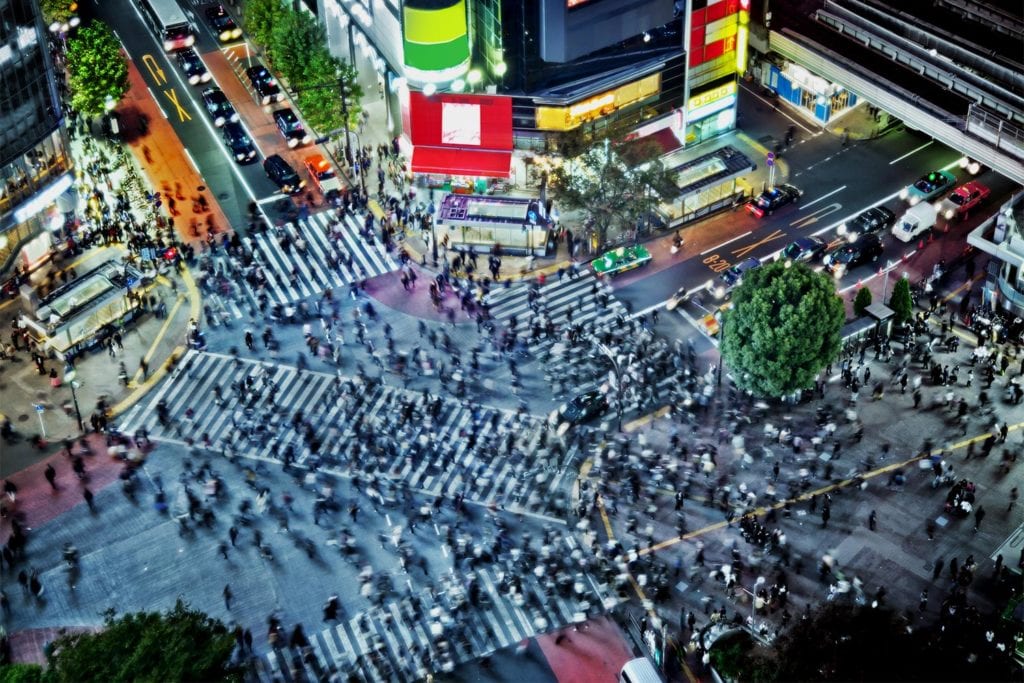The End of Globalisation?
Globalisation is increasingly being seen as a social and economic problem. But is it the process itself, or the way we deal with it that has to change?
Our Prime Minister has recently stated her view that “change is in the air”. Media commentators are pointing to populism and isolationism as shaping public opinion and national policy on both sides of the Atlantic. These trends are seen as having produced two decisions of historic importance: the UK’s decision to exit the European Union (commonly known as ‘Brexit’) and, more recently, the election of Donald Trump in the United States.
Many, in turn, have asserted that this means the end of globalisation.
Globalisation has been underway for decades – a process where individual countries trade more of their goods and services internationally, where ideas and technologies are communicated rapidly between global cities, and where supply chains and labour markets become increasingly interconnected. There is really no way back from this, as it is driven not only by free trade policies, but by technology platforms that have enabled accelerated international exchange of both goods and ideas.

The global economy is here to stay
According to the World Trade Organisation (WTO), the value of global trade last year was 16.5 trillion US dollars. Global economic conditions and ongoing uncertainties have actually pushed this level down by 13% since 2014, when the figure was an even higher 19 trillion US dollars. Fluctuations in commodity prices and exchange rates are seen as having contributed to the reduction in global trade from its previous high, and this has been more pronounced for goods than for services. Slowing economic growth in China is also a contributing factor. But is this a fatal decline or a temporary blip?
Despite recent economic conditions, and a reduction in volumes, the actual processes of globalisation are unlikely to disappear. Most countries are tied, at least in part, to international trade and commerce and most rely both on exporting commodities and final/intermediate goods, and importing the same. Exchanges of ideas and technologies that enable some countries and regions of the world to develop quickly – including the Asian giants of China and India – are based on openness to trade and foreign economic influence.
Scales of globalisation, from country to city level
More importantly, it is not just at the country level that we see the impacts of globalisation – it becomes even more apparent when the lens is focused on the city. International business centres such as London, New York and Tokyo have obviously strengthened their economic positions on the back of globalised networks – they have critical mass in many high-value industries and act as geographically important exchange nodes. Smaller cities – such as Hong Kong, San Francisco, Zurich, Boston and Stockholm, which have particular clusters in finance, business services, technology and science – are strong mainly for their ability to translate scientific knowledge into highly specialised internationally-traded products.
The Buro Happold economics team has worked in numerous and diverse countries recently, including the USA, China, South Africa, Sweden, Qatar and Malaysia. These nations are very different in economic and developmental terms. But they all have one thing in common – they have cities, sites, zones, and locations of many different forms – identified as drivers for economic growth and targets for more intensive international investment. Their governments are seeking to identify exactly the range of industrial and sectoral activity that provide competitive advantage and an ability to create new, high-quality jobs. Fundamentally they seek an opportunity to attract foreign investment and its associated innovative capacity and they want to embed this in their own internal economic systems.
The challenge, however, is that globalisation and international trade may not provide benefits that are easily accessed by all parts of the domestic population in the same way.
There is no guarantee that a newly emerging industry in a particular city or region will have a broad impact across different communities within that country. Our experience suggests that this area is often neglected by policy-makers in rapidly growing cities.
For the benefits of globalisation to accrue as widely as possible, certain critical factors are necessary. These include high and consistent levels of economic participation, which in turn requires a removal of barriers, and a strong and inclusive education and training system that doesn’t leave anyone behind. A serious amount of strategic planning must go into working out how economic benefits are ‘locked in’ to a domestic trade system. The development of a skills base and a network of local supply chains that can effectively ‘receive’ and absorb the benefits of international trade and foreign investment are vital.
Allied to this, the deployment of hard infrastructure – especially transport systems – should be planned with the aim of extending the benefits of trade and foreign investment as widely as possible across surrounding communities.
Technology helps people access the benefits of globalisation
Also fundamental is the role of technology – a major enabler of the gains from globalisation, but simultaneously a barrier for many. It is the duty of governments, municipal authorities, and the private sector – both national and foreign – to ensure that the full cross section of community can access technology and participate in economic systems, education processes and social structures. Fundamentally this about education and urban service provision – both hard and soft. And this is even more important where a city’s population is growing rapidly and becoming increasingly diverse.
Technology is continuing to drive rapid economic development. It is not just trade that changes with technology, but the very way we work. The impact of technology, automation and robotics on the availability – or disappearance – of particular types of jobs is also part of a growing popular demand to see more protectionist economic policies. But protectionism is not the answer. It all comes back to education, skills, human adaptability and creativity and the resilience of urban labour markets.
The solution?
Enabling people to participate in a rapidly changing economy is the only way that the gains from globalisation can be accessed and shared out. Without this, the desire to stop what is an inevitable process will not go away.




